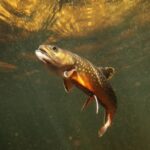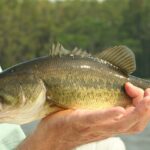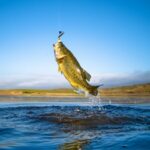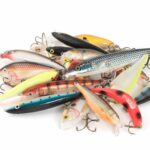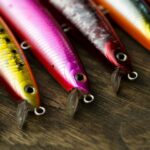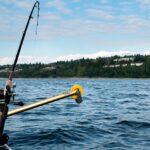Ponds are ideal for bass. Most fishing ponds are likely to have plenty of bass. However, most anglers usually find small bass in ponds and yearn to catch something bigger. Are there any special techniques or tips for catching big bass in ponds?
To catch big bass in ponds, fish in ponds that can support big bass, and fish in the summer season when the bass are biggest. Use live bait for the biggest fish or large lures that mimic live bait. Fish at dawn and dusk for the best results.
The beauty of bass fishing is that you never know what you are going to get. This means that you are as likely to catch small bass as you are to catch large bass, depending on the bass population in the pond. However, with that said, there are some tried and true methods used by anglers for catching bigger bass in ponds.
How To Catch Big Bass In Ponds
If you enjoy pond fishing for bass and have had some luck getting fish on the line, but you yearn to catch some larger specimens, what can you do?
Bass can be very difficult to catch sometimes. It is important to use the right gear, rig, and techniques to catch the best bass possible. Larger bass are difficult to catch because they are so quick, wily, and looking for specific prey items that offset the calorie deficit of hunting.
Large bass are very aggressive hunters, which means they are ready to bite anything that seems like suitable prey. The best methods to catching the biggest bass are based on where you cast, what time of year you fish, and the techniques you use.
Fishing in ponds has its own specific set of challenges, especially when fishing for bass. Let’s explore the best methods, gear, tips, and tricks for catching the biggest bass possible in ponds, regardless of where you are in the world.
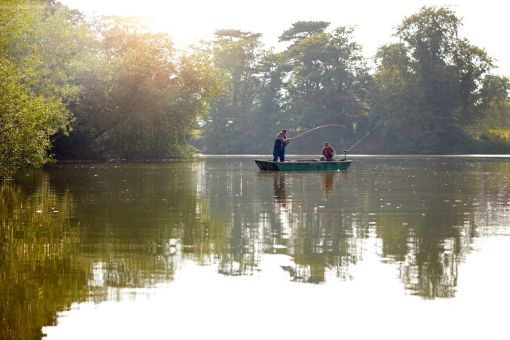
Find A Pond With Big Bass
The first step in catching big bass in ponds is to look for ponds with potential for big bass.
Fish grow according to their environment, competition for prey, and available food items. This means that ponds with large bass will be relatively big, have an abundance of food, and have less bass in them.
Look for a large enough pond to support big fish and a pond with a large population of smaller fish and bait fish, especially bluegill. Bluegills are a favorite prey item for bass, and if there is plenty of these fish in the pond, the bass will have enough food to grow as big as possible.
The less competition the bass have in the water, the more likely they are to grow bigger. If you find a small pond with a lot of small bass and not many bait fish, the pond is not likely to have big bass.
If the pond is large, has few bass but plenty of baitfish, and is located in a temperate climate, you are far more likely to find big bass. Find a pond like this before you begin fishing, and catching big bass becomes far easier.
Use The Right Lures For Big Bass
Bass are highly aggressive hunters known to catch all manner of small animals, including snakes, frogs, fish, baby alligators, insects, and almost anything else they can close their mouths around.
However, bass are also very wily. Just because they will hunt anything, they are very difficult to fool into biting a lure unless the lure perfectly mimics something that the bass is likely to encounter in the wild.
This is especially true for catching big bass, as these fish are older and are less likely to be tricked into biting something that is not food.
The best lures to use for larger bass include the following:
- Crankbaits
- Jigs
- Jerkbaits
- Rubber worms
- Spinners
- Swimmers
- Prey lures
These lures tend to more accurately mimic prey items that bass are likely to encounter in the wild, which significantly increases the chances of the fish taking the bait.
All of these lures require using specific techniques for success, but if you learn how to fish with these lures, big bass becomes far easier to catch. Take your time to experiment with each of these lure types and choose the lures that work best for you and your style.
There are thousands of lures to try, but if you are targeting the biggest bass possible, these are the ideal options. These lures also work very well in ponds because they do not require a lot of space to work well, and they function well in any water depth.
Use The Right Colored Lures For The Water
On the topic of lures for catching big bass, it is also important that you use the right lure colors for the water you are fishing in, especially when targeting larger bass.
If the fish cannot see your lure, it is far less likely to work.
When fishing in a pond with very clear water, the best-colored lures to use are those closest to natural colors.
For example, when using rubber worms, use worms that are light brown or pumpkin green. These worms mimic the color of real worms, which is more likely to fool the fish.
However, in dark or muddy water, use dark-colored lures. Dark brown, blue, black, red, and purple work well in these waters. The darker color of the lure allows fish to see it more easily in murky water. Light-colored lures disappear in dark water.
Lure color is far more important than most anglers realize, and when fishing in ponds and trying to catch the biggest bass possible, even these tiny details can mean the difference between success and failure.
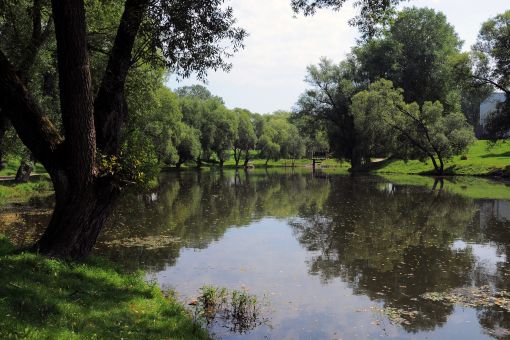
Use Fast And Slow Lures
When fishing for bass in ponds with lures, it is important to use a range of lures until you find something that works. Focus on alternating between fast-moving and slow-moving lures until you notice some attention from the larger bass.
Bass tend to move differently according to the weather, the season, and the temperature of the water. If the fish are feeling sluggish, or if the weather is cold, they will move far slower and not attempt to catch fast-moving prey.
However, if the fish are moving quickly due to water or ideal weather conditions, they are more likely to hunt something that is moving through the water quickly.
Use slower lures when fishing in colder weather or in winter, and use faster lures on warm days or on days when the water is warm.
Bass are cold-blooded animals, which means they are severely affected by changes in temperature. The bigger the bass, the more affected by temperature change it is, and the more it must regulate its body temperature.
Use The Right Hook And Lure Size
When fishing for bass, regardless of what type of water you are fishing in, it is critical to use the correct size lures and hooks.
Bass are aggressive and will bite any lure or bait that is acceptable to them, but if you use a hook that is even slightly too small or too big, the fish will either eat the lure or bait off the hook, or the hook will not set properly, and the fish will escape.
It is best to use size four hooks, if possible, when catching larger bass, and it is critical to use lures that are large enough to entice big bass and equipped with heavy-duty hooks to land these fish.
The correct hook and lure size is often underestimated when fishing for big bass, and these fish are surprisingly difficult to catch without the correct size tackle.
Use The Right Bait For Big Bass
Fishing for bass in ponds can be successful when using the right bait. Lures are a good option for catching large bass in ponds, but if you want to get the biggest bass in the water, using bait is the best method.
Live bait and dead bait work well for bass, but live bait is always a great option if you can manage it. Live bait works especially well because these fish are prolific hunters and prefer catching living food.
If you can, try using live bait from the pond the bass are living in. The bass will be accustomed to catching this prey, taking the bait more readily.
If you see a lot of small fish or baitfish in the pond, including shiners, minnows, or bluegills, try catching a few of these and using them as live bait. These fish can be caught with some bread as bait and a well-placed simple fishing net.
Set a hook in a live baitfish, and watch the big bass come for it. The bigger the bait, the bigger the bass you will likely catch. Very small baitfish, such as minnows, will likely attract smaller bass, but fish such as bluegill or shiners will bring in the big bass.
You can also use live bait that works well for bass, such as worms and insects like crickets and grasshoppers, especially if you can find them near the pond. Dragonflies, beetles, and any other insects you can find near the pond will also work well, as the bass are probably used to eating them when they get too close to the water.
Dead bait also works for bass, but not as effectively as live bait. Cut and stripped bait work well, chicken livers can work, and even small frozen mice or pinkies are an option for big bass.
However, to ensure non-live bait will work, it is best to use commercially prepared bass bait. Several bait options work well, as they are designed specifically for bass.
Commercial bait will work on any fish attracted to it, which means that you may catch fish other than bass using this bait, but if you are willing to catch anything, then this bait is ideal.
The best bait for catching the biggest bass possible is live bait from the pond that the fish live in, but any bait is likely to work well with these hungry fish.
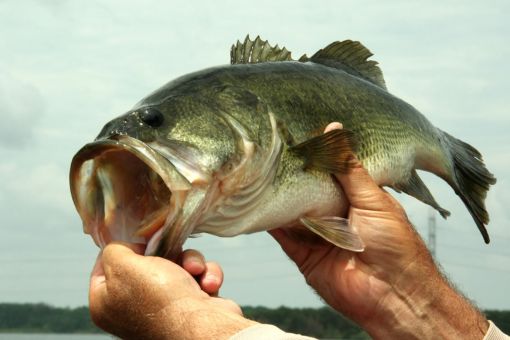
Fish During Spawning Season
A season that is best for catching big bass in ponds is the bass spawning season. These fish spawn in spring and early summer when the water warms up after winter. At this time of year, bass eats far more as they need the extra sustenance for spawning.
Bass is more likely to take bait and lures during the spawning season due to their increased feeding requirements, and the fish can grow much larger during this time due to their extra food intake.
Bass grow largest when there is an abundance of food and when they are actively eating that food. This means that fishing during the months of late spring and early summer is most likely to yield the biggest bass.
Fish In The Summer
Summer is also a good time to fish for big bass in ponds. During the warmest months of the year, these fish are somewhat more elusive and tend to hide in cover to escape the heat, but if you find them at the right time of day, there are sure to be big bass to catch in summer.
The months of summer are good for catching big bass in ponds because they have had the spring and spawning season to grow bigger, and there is more food for them to eat in the summer as other fish and insects breed, increasing the food supply.
You are likely to only find smaller fish in the winter, but fishing in summer can yield some monster bass.
If you find the right pond that has the right requirements for supporting big bass, your best chance of catching them is in the summer.
Cast your line at the right time of day and in the right location in the pond. Using the right bait, you are sure to catch the biggest bass in the pond.
Fish At Dawn And Dusk
A good trick for catching the best bass in a pond is to get to the pond early or stay there late.
Bass prefers hunting in low-light conditions, and it is well-documented that bass are easier to catch at dawn and dusk for this reason.
The bigger bass are also more likely to be in shallower water during this time to catch prey, and they are readily looking for food during these times of day, making it far easier to get them on the line.
You can also try fishing at night, but this is somewhat less successful than fishing at dawn or dusk, especially when using anything other than live bait.
The earliest and latest daylight hours of the day are ideal bass fishing hours. This is when you will have the most luck catching the biggest bass in a pond.
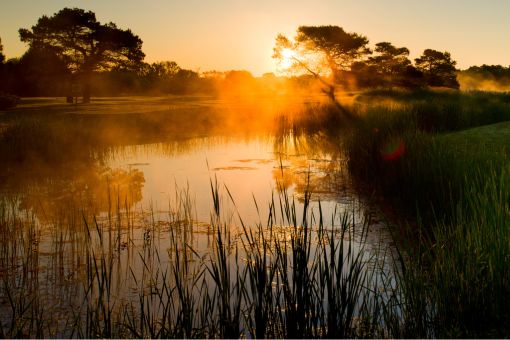
Look For Ideal Bass Fishing Locations Within The Pond
When targeting the big bass in a pond, it is critical to fish areas where the bigger bass are likely to be. Bass tend to look for areas of cover to ambush from, they like to dwell in well-protected areas, and they prefer areas where they can regulate between cool and warm during the day.
For these reasons, the best places to look for bass in a pond are where there may be fallen trees or branches, rocks, structures or platforms, retaining walls, or any other objects that are partially or entirely submerged in the water.
These structures also attract other fish that the bass may eat, giving them another reason to frequent these locations.
Bass can also be found in areas with aquatic plants or plants from the bank of the pond that hang down into the water. Bass hunt for insects in these areas and use the shade to keep cool on hot days.
Target your efforts to these areas, especially if you see bait fish nearby and you are more likely to catch larger bass.
Fish The Shallows And Drop-Offs
Most bass tend to swim in water that is appropriate to their size. Smaller bass swim in shallow water and larger bass keep to the deeper areas. The strange thing about bass is that when they get very big, they stop adhering to this behavior.
Very big bass can be found in any depth of water, as they are always looking for food items and are likely to find something to eat anywhere, as they are likely the biggest fish in the pond.
This means that you should try fishing in all areas of the pond, including shallow water and drop-offs where you may not expect very large bass to be. These fish could be anywhere, so do not neglect any area that you suspect could be good for bass. The biggest fish may be right under your nose.
Conclusion
To find the biggest bass in the pond, use as many of the above techniques and methods as possible. Big bass can be far more challenging to catch than small bass, and you must use every possible advantage to find these fish.
Once you get a feel for it and find what works for the big bass in your favorite ponds, you will quickly develop and refine your methods for catching these big fish more regularly. Take the time to practice and try various methods and techniques, and you will surely catch the biggest bass available.
- Do You Need An Indicator For Nymph Fishing? - November 16, 2023
- Fishing Safety Tips For Families - September 25, 2023
- What Is The Best Time To Night Fish At A Lake? - September 18, 2023



